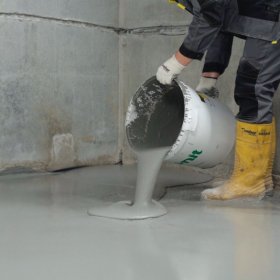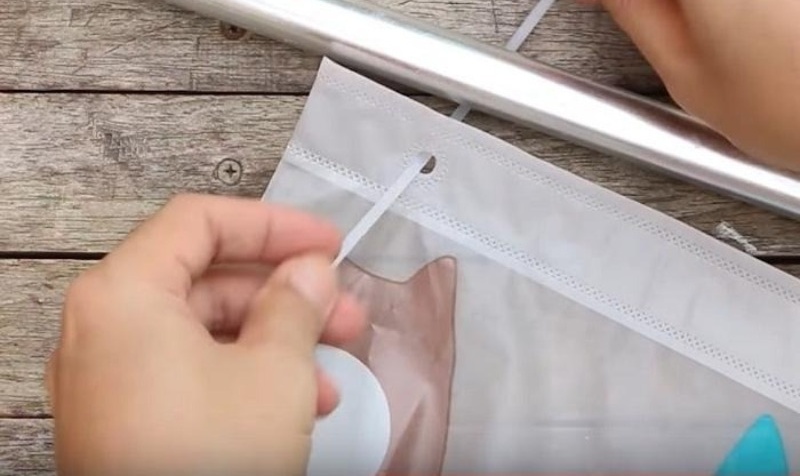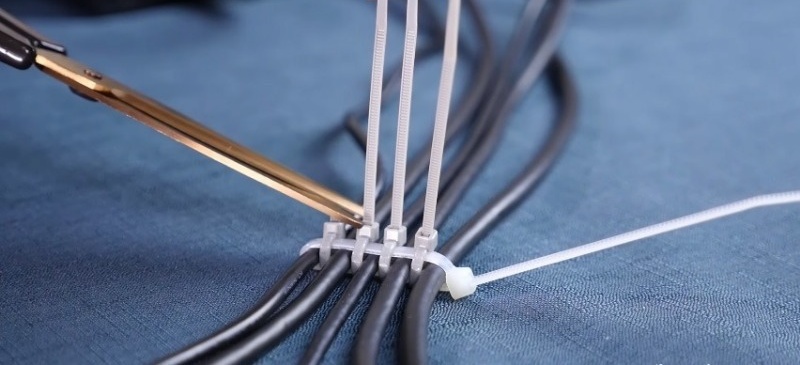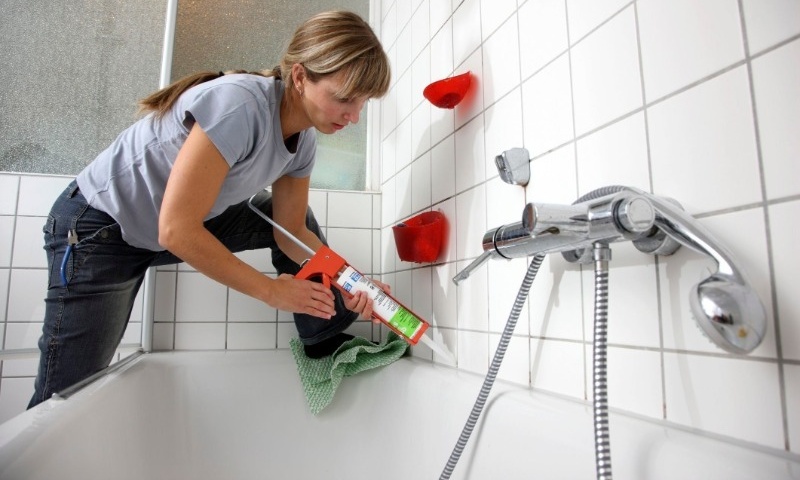7 ways to level the floor without screed

Repair is a costly and time-consuming process. To save a little, some work can be done independently. It is worth using technologies that significantly reduce the time of work. For example, instead of waiting for the screed to solidify, lay logs or make a bulk floor.
Self-leveling bulk floor
Self-leveling mixes are ideal for those who have no time to wait. Without significant labor costs, a finished perfectly flat surface can be obtained within five hours after pouring.
Even an amateur in construction can cope with the distribution of the mixture on the surface. You just need to remember to walk the needle roller along the finished floor until it hardens to remove air bubbles.
But you have to pay for convenience and speed: self-leveling mixtures are an expensive pleasure. Another disadvantage is that it is advisable to use this method only with a difference in levels of up to 35 mm. A larger drop will require a thicker layer of the mixture, and this is contrary to technology.
Grinder application
Using a grinder, you can fix defects in a concrete or wooden floor. Before grinding, the concrete base must be thoroughly cleaned of dirt, remove the top layer of the screed. Then, prepared mixtures repair existing cracks or seams. The next step is tapping the base for voids. In the presence of tubercles and potholes more than 5 mm. they are knocked down before grinding.
Grinding itself is carried out in several stages, at each of which different abrasives and impregnations are used. Coarse-grained abrasives are used for roughing. Then the inaccessible parts of the room are processed. Finishing polishing (if necessary) is carried out with a thin abrasive tool.
Dry screed
The fastest way to level the floor is a dry screed. It is performed as follows:
- Polyethylene is laid on the floor.
- The film is filled with finished composition. Most often, claydite sand acts as the basis.
- The mixture is carefully tamped, leveled and sutured from above with gypsum-fiber sheets.
Putty
To level the wooden base, you can use ready-mixes for putty. They are sold dry, so before use they must be diluted with water according to the instructions. When adding liquid, you can not overdo it - the finished composition should have a density of sour cream.
The diluted mixture is applied to the floor with a layer up to 2 cm thick. It is advisable to cover all the cracks between the boards before starting work. To get a flat surface, periodically it is worth checking the floor height level.
Creating lags from bars
Leveling the floor in this way is only possible in rooms with high ceilings. To create an even base on the walls make marks for fixing lags. When the level is adjusted, the boards along the walls of the room are fixed with screws. To give strength to the construction, transverse logs are laid.
Between the boards, a certain distance should be maintained, which depends on the sheet coating used in the future. For example, if for the sake of economy the flooring will be made of plywood, then the distance between adjacent logs should be about 35 mm. For stronger material, you can increase the distance between the boards up to 55 mm.
When the logs are bedded, proceed with the installation of the flooring. Plywood sheets need to be cut to the required sizes. Lay the blanks so that the edge of the material falls in the middle of the log. Fasten plywood with self-tapping screws, recessing fasteners into sheets. Then it remains to lay the topcoat.
A mixture of sawdust and PVA glue
One of the easiest ways to level a wooden floor is a mixture of sawdust and PVA glue. Before starting work, you need to put beacons on the floor, which are fastened with self-tapping screws. Then the sawdust is connected with PVA glue, the mixture should have the consistency of sour cream. The next step is to pour the mixture onto the substrate. This composition has an increased shrinkage, so you need to fill it with at least two, or even three times. When the mixture hardens, lay on top of it sheet material (plywood, etc.).
Looping
If the difference between the levels in the room is insignificant, the wooden floor can be leveled by cycling. The process can be carried out manually through cycles or use a looping machine.
Before starting work, you need to drown all the fasteners in the coating so as not to damage the tool. Also, before cycling, you need to make an audit - inspect the floor for problem areas, fill all cracks and crevices, replace unsuitable boards.
The first cycling is carried out with a coarse-grained abrasive, passing along the diagonal of the room with the capture of a strip of already treated floor. After roughing, garbage is removed. The second cycling is carried out with an average grit abrasive. The machine must be overlapped parallel to the floorboards. Finishing is performed with fine-grained sandpaper.
There are many ways to level the floor, but each of them is recommended to be used only for a specific base. For a concrete base, the use of self-leveling compounds or grinding with a professional tool will be optimal. Wooden floors can be leveled with sheets of drywall or plywood. You can restore expensive parquet boards by looping or a grinder.


